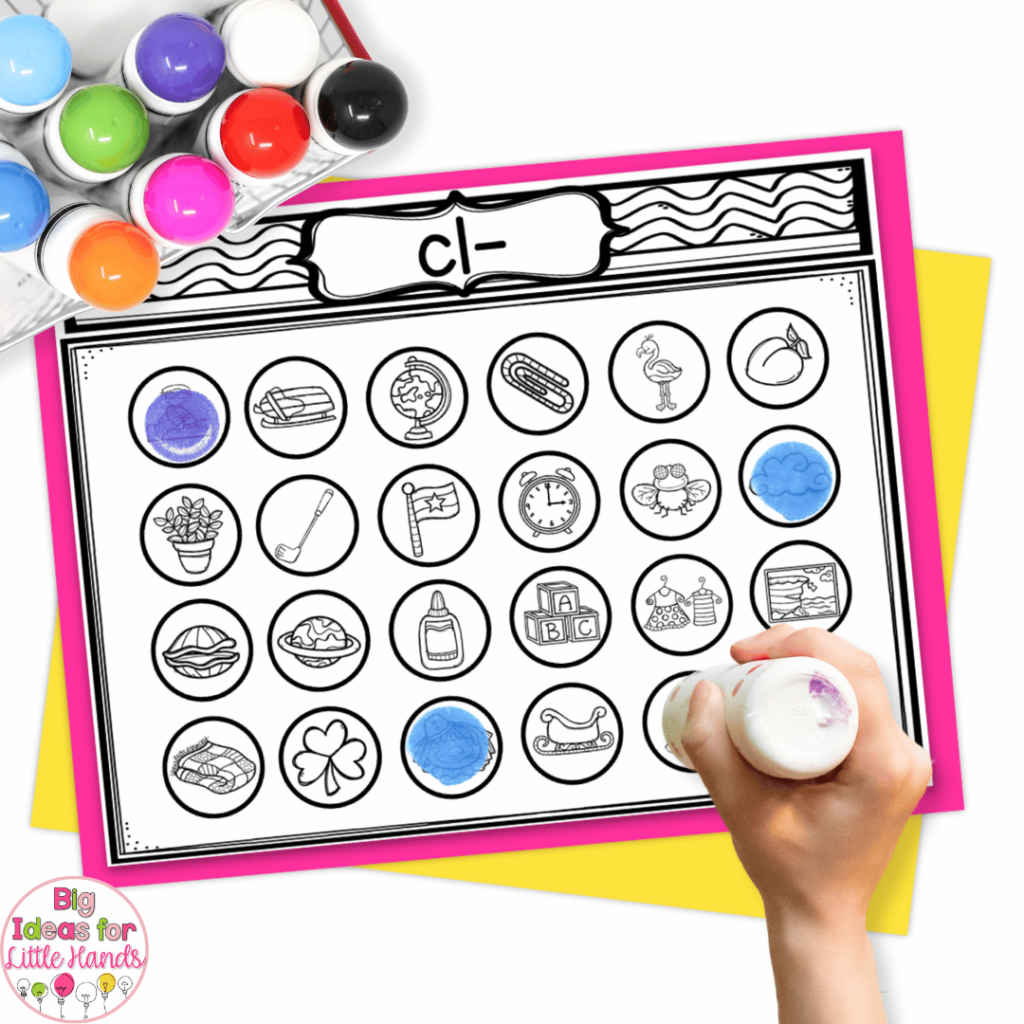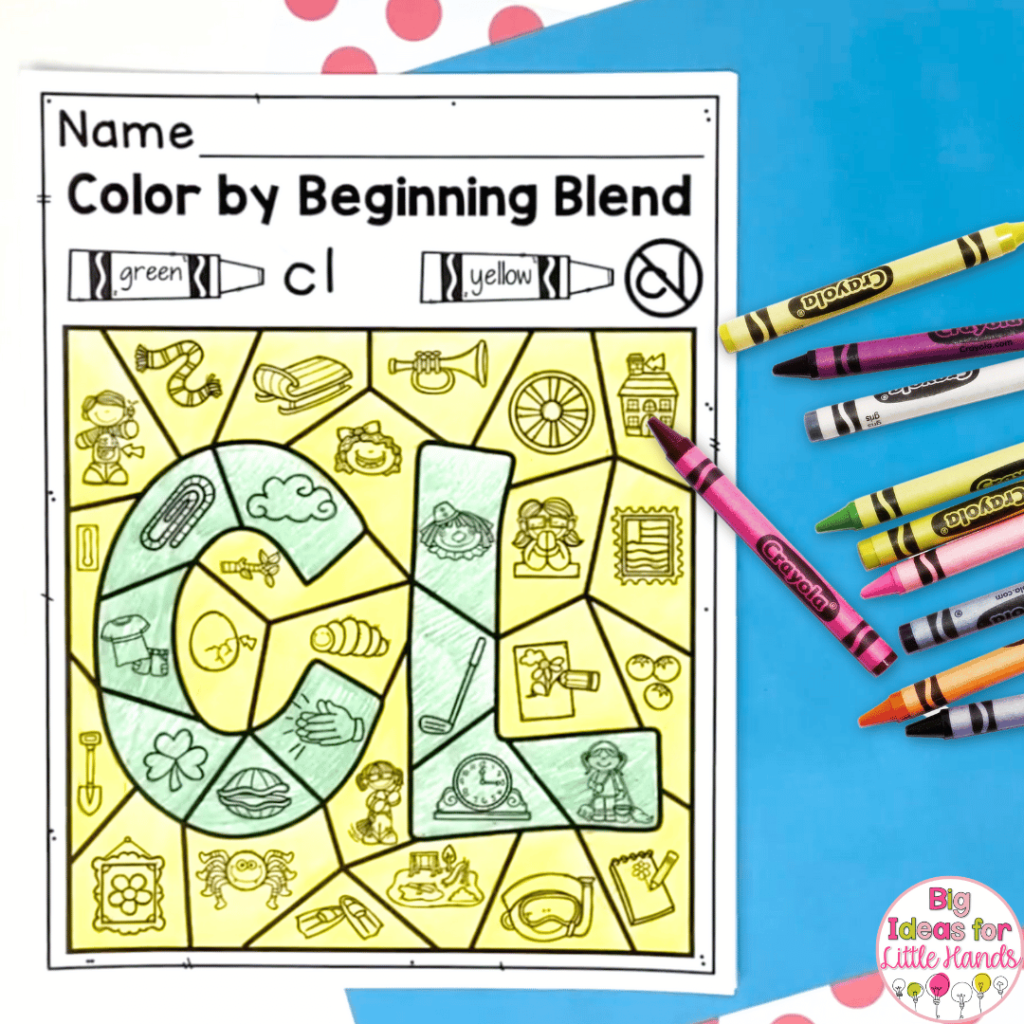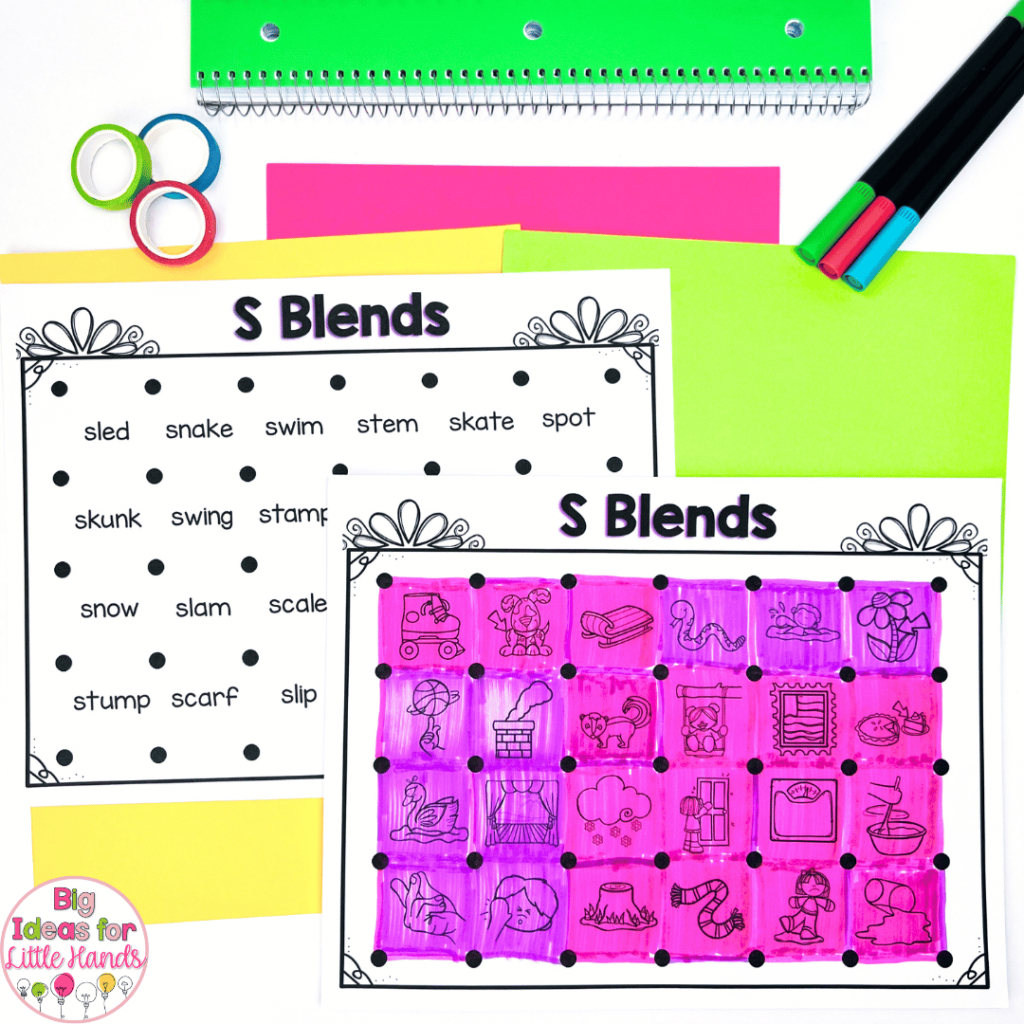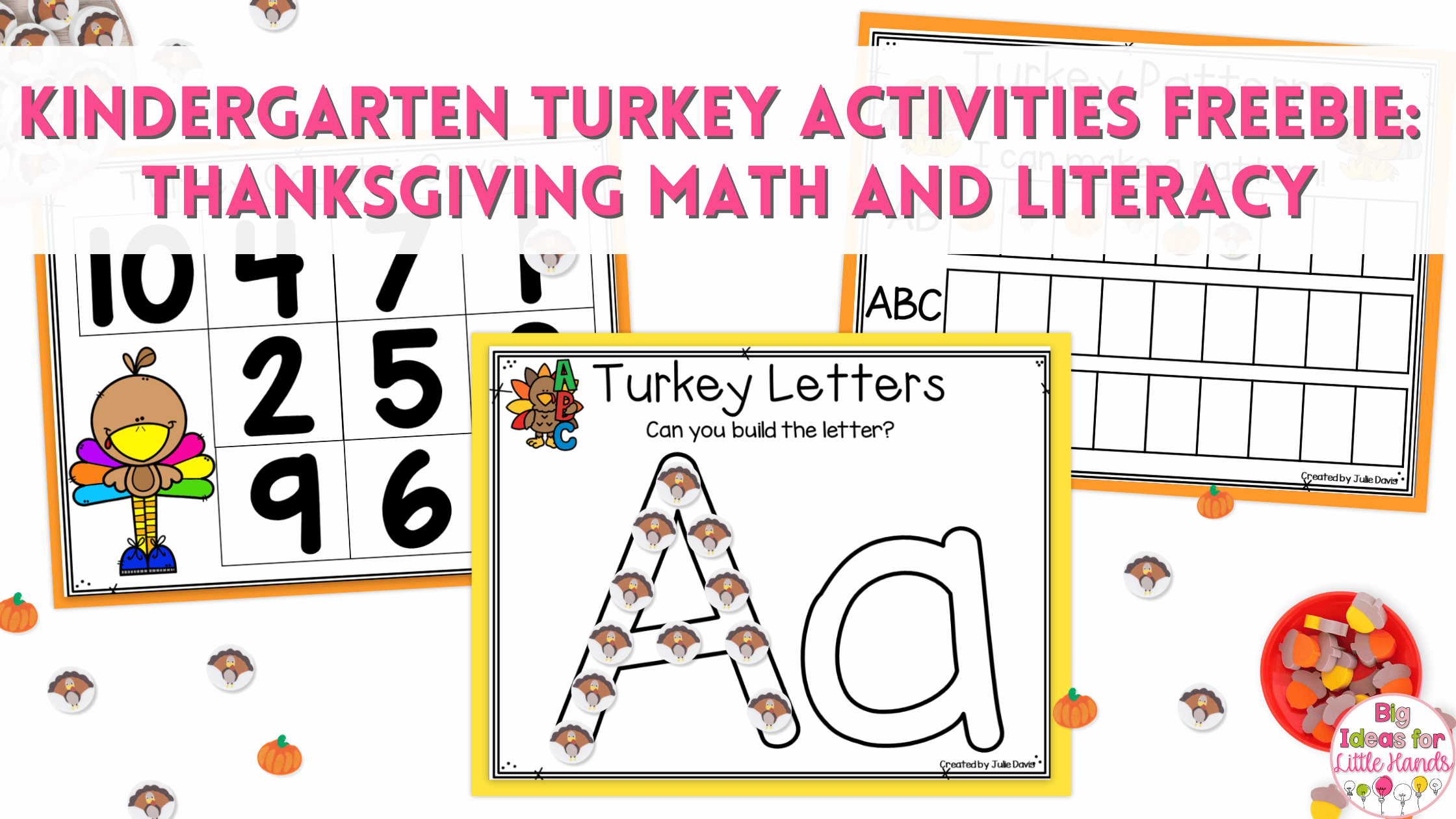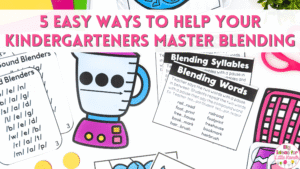As a primary teacher, one of the biggest milestones we help students reach is learning to read. It’s one of the things I love the most about being a kindergarten teacher. Our sweet kids arrive to us with minimal knowledge of the alphabet, but in a few short months, they become readers. It’s a beautiful thing to watch and a beautiful thing to be part of. As students master the first steps of decoding and fluency, we don’t just stop. Instead, we keep helping them build their skills with one small challenge after another. Today, we are going to dive into teaching the skill of consonant blends.

What are Consonant Blends?
“Consonant blends” is a phonics term that refers to having two or three consonants together in a syllable without having a vowel between them. For example, the ‘bl’ in black is a consonant blend, as is the ‘str’ in stripe.
What distinguishes consonant blends from consonant digraphs is the sound that the letters make. Consonant digraphs, like ‘sh’ and ‘th’, are two consonants together that make one sound, which is different from the sound of the individual letters. On the other hand, in consonant blends, each consonant makes its normal letter sound.
When to Teach Consonant Blends

Before diving into teaching blends, it is important that your students can first read CVC words and know the sounds of each consonant, individually. This assures that they understand the decoding process and have been able to apply it to short vowel, single-syllable words.
This usually happens during the second half of kindergarten or the beginning of the first-grade year. This timing is just a general guide as to when the average student is ready to move to this step, so don’t let this rush you into introducing consonant blends. It is much more important that students have a solid understanding of decoding CVC words before moving on. Moving on before students are ready only causes issues and makes reading more frustrating for the child.
As you probably know, students are going to be ready to move on at different times. That’s why small group reading instruction is such a great tool to use. It’s the best way to make sure you are meeting each child right where they are in the learning process.
Common Consonant Blends
Consonant blends are often categorized according to one of the letters in the blend. The most commonly taught blends in kindergarten and first grade are L blends, R blends, and S blends. These include consonant blends like bl, fl, br, pr, and st. These are just a few examples of the consonant blends your students will learn.
Introducing Consonant Blends

When I introduce blends to my students, I begin by showing them consonant letters and asking what sounds they make. I will strategically use the consonants that make up a consonant blend. As students identify the consonant sounds, I ask them what would happen if we pushed the sounds together. Students then begin the process of blending the sounds.
If your students look a little confused or their mouths are contorting like they are trying to read a foreign language, you are on the right track! Many early readers have difficulty with the first introduction of blends because it physically feels different than blending consonants with a vowel.
We don’t skirt around the elephant in the room! I get the kids thinking about why these two letters feel different than the other words they read. It doesn’t usually take long before a student taps into the fact that there are no vowels. It is then that I introduce the term ‘blends’ to my students.
I like to make this concept fun, so I teach students that these letter friends are the best of friends. They like to be right next to each other and won’t let a vowel get between them. The students can easily connect to the idea of being near a bestie and work hard to make sure they can stay together.
Bad Habits Rear Their Ugly Head
This is also the time you may notice any bad habits students have developed with letter sounds. If a student has added a vowel sound to the end of their consonant, they will start reading blends as real words. For example, instead of the /p/ air only sound, if a student says /puh/, they might read the ‘pl’ blend as “pull”. Make sure to take the time to correct these mistakes.
Teach One Group of Blends at a Time

The best way I have found to teach blends is by focusing on one group of blends at a time. I like to start with R blends because they are some of the easiest to blend since the /r/ sound has a vowel-like beginning. When teaching R blends, I will cover: br, cr, dr, fr, gr, pr, and tr. From here, I move on to L blends and then S blends.
As students learn one of those consonant blends, they can apply that to learning the others. But. . . I always introduce one blend at a time! Not one group of blends, but one actual blend. I like to begin with blends at the beginning of a word. Then I teach it just like I would any other skill or concept. Explicit instruction complete with modeling and examples, guided practice where students are working on the blend but with support, and then finally independent practice.
In my classroom, this often looks like a small group lesson on the blend we are learning. We tackle the individual consonant sounds, the blend sound, and a variety of words with the blend. I love to write out the words and have students circle the two letters in the blend so that they can see them in action. Next, we will practice blending some words that include our target consonant blend. As students read these words, I like to do a quick comprehension check to make sure they understand the word’s meaning. I might have them draw a picture or use the word in a sentence.
We also spend some time working on segmenting the sounds in a blend. I’m a believer that teaching reading and spelling go hand in hand. So I always make sure to work on these skills at the same time. For this, I will say a word and have students repeat the word, then break it down into its individual sounds and write the sounds that they hear.
Some students pick up blending and segmenting consonant blends quickly, and others need more practice. I let my students’ progress guide the pace at which we move.
My Favorite Consonant Blend Practice Activities
I know that it will take much more than a few small group lessons for my students to really master blends. That’s why I use a variety of activities to help them learn and practice this skill. What I love about each of these activities is that, in one sitting, students will get multiple opportunities to practice our target skill. If you’ve been a teacher for long, you already know that repetition is the name of the game!
These are my favorite activities that I use for blend practice.
1. Cover It Up! Games
Cover It Up! are my go-to activities that I love to use as a small group warm-up. I can quickly lay out the game board for the skill each student is working on, and they can play independently. This gives me time to monitor the classroom transition from one center to the next and make sure that the rest of the class is where they need to be. I love that it doesn’t leave my small group waiting on me. Instead, they can jump right in and start working.
On each Cover It Up! game board, students identify the target skill at the top of the page. Then they begin looking through the game board to find all the items that match the target skill. They will use counters, mini erasers, or even bingo daubers to “cover up” the matching items. When I’m ready to start the group, I can take a quick look at each student’s board to see how they are doing on the target skill.
2. Color by Blend
My kids absolutely love color-by-code pages. I love that they can be used to practice a variety of skills in a way that kids stay focused and engaged. In this Color by Blends resource, students will identify pictures and then determine if the picture word includes the target blend. They will color the section for each picture according to the code provided on the page.
I love to include these pages as a differentiated center activity that students can work on after our small group lesson. This way I can give each student a color-by-code page that matches the skill they are practicing. They also make great morning work activities that kids can work on as they arrive.
3. Let’s Make a Square Games
Let’s Make a Square is a partner game that my students beg for! Played like the traditional connect the dots game, students love grabbing a partner to see how many squares they can color in. Students take turns adding lines to the game board. When one student adds the final line to enclose a square, they must correctly identify the blend before coloring in the square.
These ‘Let’s Make a Square’ games make a great review after teaching a full blend group since multiple blends are included on the same game board. I love to introduce this game in our small group setting to make sure that everyone understands how to play. Then I add them to our literacy centers for students to play during center time. They also make a great early finisher activity.
Consonant Blends for the Win!
Once your students are introduced to and learning how to read words with consonant blends, a whole new level of reading is opened up to them. While mastering this concept will take time and practice, you can make it fun for students by using a variety of different activities. From small group instruction to interactive games, your students will love growing their reading skills with consonant blends.
Save These Reading Ideas
Save these tips and ideas for teaching consonant blends by pinning this to your favorite teacher Pinterest board.


